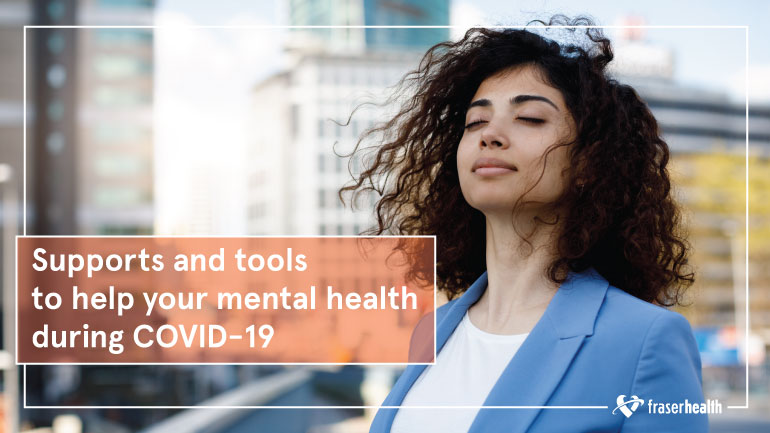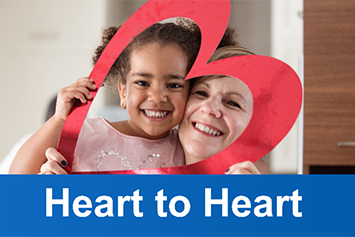
Mental health services and tips for coping with anxiety
It is normal to feel anxious in the midst of COVID-19. Increased social isolation, the inability to do things that may normally bring joy, and uncertainty about the future all contribute to feelings of stress and anxiety.
If you are experiencing mild to moderate mental health concerns, the following free services are available. If you are looking for more specialized help, Fraser Health Mental Health Substance Use Services are open to support you.
We also have tips for managing fear and anxiety and resources for substance use relapse prevention.
The Ministry of Mental Health and Addictions has a list of resources for mental health supports for social distancing and self-isolation.
If you are experiencing overwhelming anxiety, worry and fear, you can reach out to the Fraser Health Crisis Line 24/7 at 1-877-820-7444 (toll-free) or 604-951-8855.
Tips and tools for managing anxiety
There are some other strategies you can use to support your mental health and wellbeing. For example: meditation and yoga, and mindfulness activities are all excellent ways to help self-manage anxiety and stress.
Try the below activities and applications the next time you are feeling a spike in your stress. Remember as well that caffeine, alcohol, and other substances can have an effect on your stress and anxiety levels, while exercise can help reduce them.
5-4-3-2-1
This is a grounding technique that you can use when you feel anxious or overwhelmed. It can be helpful in the face of strong fear or dread and acts as a way of reinforcing the safety of the place where you find yourself.
Answer the following:
- 5 things you can see right now. Look at them.
- 4 things you can touch right now. Touch them.
- 3 things you can hear right now. Listen to them.
- 2 people who you know love you. Think of them.
- 1 of those people you can contact today. Reach out to them.
Figure 8 breathing
Our breathing is the one place where we can readily intervene in our body’s functioning. We are not able to automatically control our heart rate or blood pressure, for example, but can regulate our breathing.
This is an exercise to help you gain control over your breathing and introduce a sense of calm to your situation.
- First, place your index finger on the palm of your hand or on the table before you.
- Begin to slowly and consistently trace the path of half of a figure eight and inhale slowly.
- As your finger comes back to the centre of the figure eight, continue to trace the other half in a consistent and slow manner, now switching to exhalation.
- Continue to repeat the movement until you have calmed and soothed your body.
Helpful apps
There are a number of online applications focused on relaxation, mindfulness and anxiety relief.
Breathr, developed by the Health Literacy team at BC Children's Hospital – a new app to help introduce the concept of mindfulness to teens and to create an easy access point for those who are new to this practice.
Mindshift CBT uses scientifically proven strategies based on Cognitive Behavioural Therapy to help users cope with panic and worry.
Headspace is offering a collection of guided meditations and exercises (including brand-new recordings) available for free to all employers and their employees.
Calm has put together a series of free resources, including sleep meditations, meditations for kids, and practices to find simplicity and calm.


